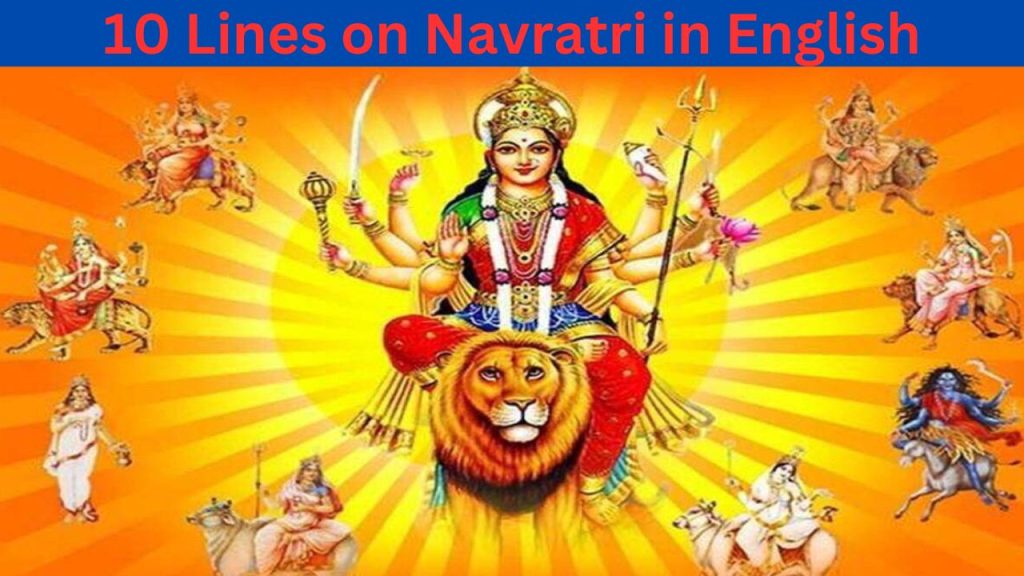Dear kids and students, if you are browsing for 10 lines on Navratri in English, then your search is over here. Navratri is a very important essay writing topic for lower primary students and kids. An essay (10 lines on Navratri in English) on Navratri is a great medium for teaching them the significance of the festival, its traditions, and the story behind it. Here are a few points to help little kids write this essay.

10 Lines on Navratri in English For Kids And Students
- Navratri, meaning “nine nights,” is a major Hindu festival.
- It worships Goddess Durga in her various forms for nine days and nights.
- Celebrated twice a year, during Chaitra and Sharad months.
- Devotees observe fasts, sing hymns, and dance in celebration.
- Dandiya and Garba dances are prominent during Navratri.
- The festival symbolizes the victory of good over evil.
- People dress in vibrant attire and create a joyful, festive atmosphere.
- Navratri is a time for family gatherings, feasting, and cultural performances.
- Temples are adorned, and prayers are offered to seek blessings.
- It’s a period of spiritual reflection and rejuvenation for believers.
Conclusion: Embracing Navratri’s Essence
Navratri, a celebration of the divine feminine and the triumph of good over evil, holds immense cultural and spiritual significance. It’s a time to come together, to dance, to pray, and to rejoice in the company of loved ones. The festival offers a chance to delve into the rich tapestry of Indian traditions and values. As the vibrant hues of Navratri light up the surroundings, let us embrace the positivity, spirituality, and joy this festival brings.
Also Read :
- Essay On Global Warming In English for Students and Children
- Essay on Holi For Students
- 10 Lines On Holi In English For Students and Children
- Essay on Ram Navami in English for Students
- 10 Lines On Dog In English For Students And Children
- 10 Lines On Cat In English For Students And Children
- 10 Lines On Elephant In English For Students And Children
- How To Write Essay On Camel For Students Of Classes 1, 2 & 3
- How To Write 10 Lines On Horse In English For Students And Children
- 10 Lines on Cow In English
- 10 Lines on My School For Students And Children In English
Follow Lyrics Best on Facebook and Twitter
FAQs
Q1: What is the origin of Navratri?
A: Navratri has ancient origins, deeply rooted in Hindu mythology and traditions. It symbolizes the victory of Goddess Durga over the buffalo demon Mahishasura.
Q2: Why is dancing significant during Navratri?
A: Dancing, especially the Garba and Dandiya dances, is a way to celebrate the festive spirit of Navratri. It represents joy, togetherness, and devotion to the divine.
Q3: Are there regional variations in Navratri celebrations?
A: Yes, different regions in India have unique ways of celebrating Navratri, with variations in traditions, customs, and food.
Q4: Can non-Hindus participate in Navratri festivities?
A: Absolutely! Navratri is a joyous and inclusive festival, welcoming people of all backgrounds to join in the celebrations and experience the rich culture.
Q5: How can one make the most of Navratri spiritually?
A: Engaging in prayers, meditations, and acts of kindness during Navratri can enhance the spiritual experience and deepen one’s connection with the divine.